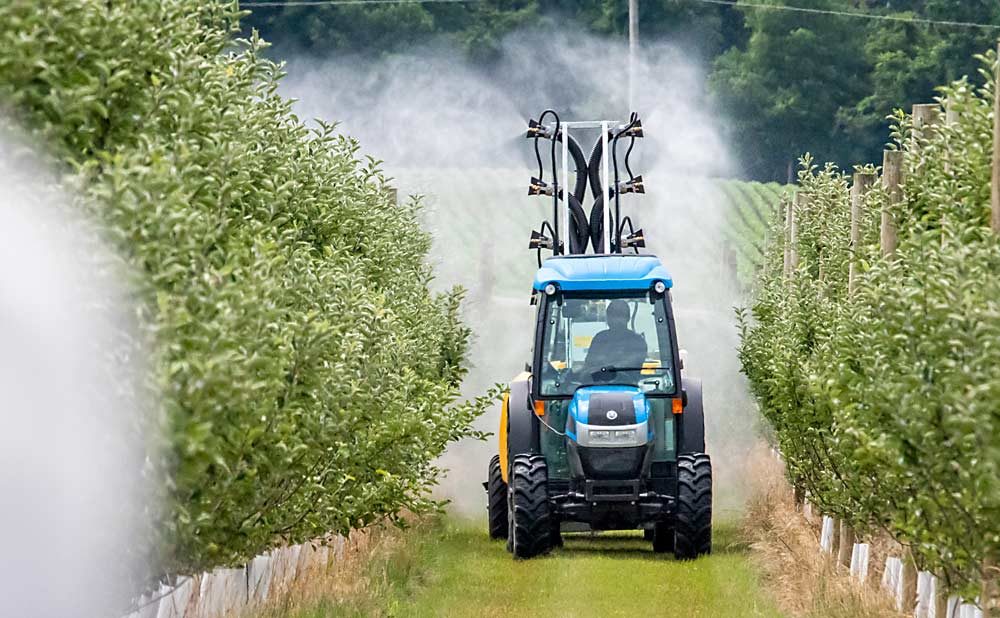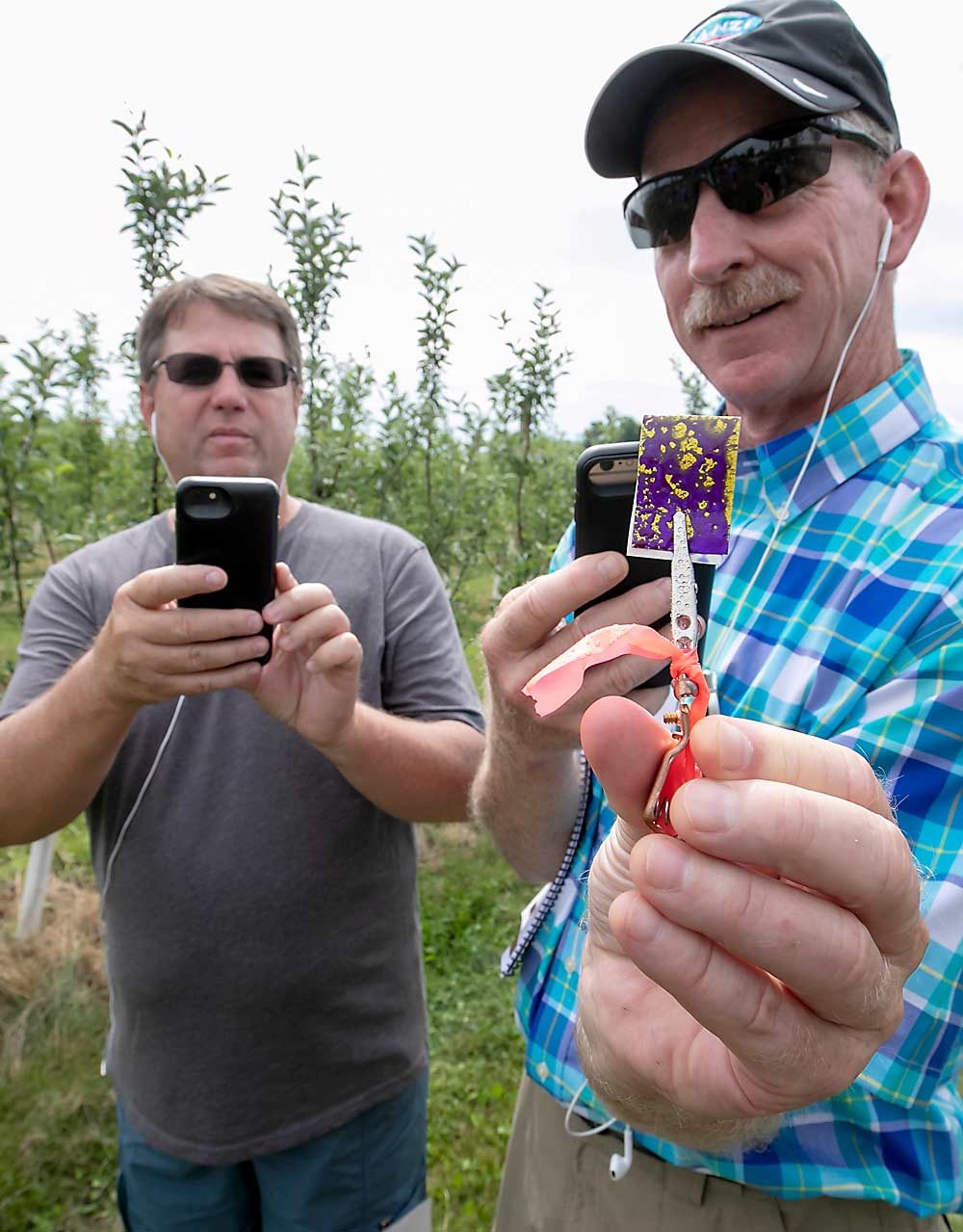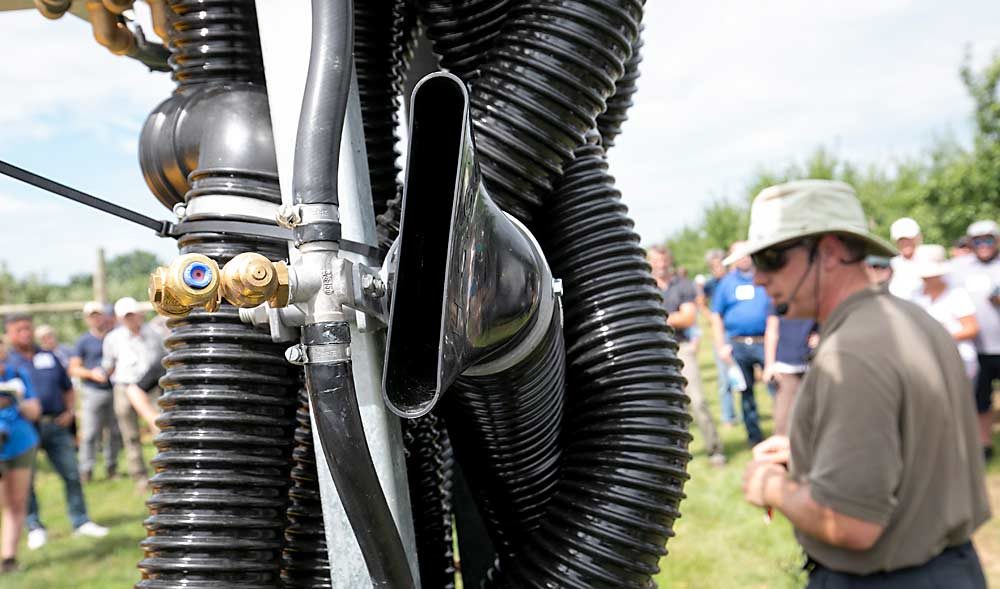
Was that a refreshing mist on a hot summer orchard tour?
Nope, it was just the drift from a demonstration on how running an airblast sprayer on its highest settings in a narrow orchard canopy is a waste of water and chemicals.
Jason Deveau, application technology specialist with the Ontario Ministry of Agriculture, Food and Rural Affairs, is a man on a mission to convince growers to get to know their sprayers.
The variability in airblast sprayers and in orchard systems makes standardizing recommendations near impossible, he said, so instead he promotes an approach known as crop-adapted spraying.
“All it means is adjusting your sprayer to match your target and the environment you are spraying in, and it’s not hard. The hard part is convincing someone to do it,” he said.
The approach reduces chemical and water use by participating growers by about 25 percent, Deveau said. That includes Chris Hedges, owner of Hedges Apples, who hosted Deveau’s demo as part of the International Fruit Tree Association’s 2019 Summer Study Tour in Ontario.
“There are lots of farmers who are not totally in tune with their technology,” Hedges said. “These blocks have all been on crop-adapted spraying. I’m definitely a believer.”
So how do you adapt your sprayer to your crop?
The first step is using water-sensitive paper tucked into the canopy in the harder-to-reach zones to assess what sort of coverage the sprayer already delivers.

For the first pass, Deveau sets the Hol Spraying Systems CF airblast sprayer — the Cadillac of airblast in his opinion — to high fan speed and high pressure.
“This may seem unfair. Why would I set it up the worst it could possibly be? It’s a shame, but I see this all the time,” he said. “It’s a waste of pesticide, it’s a waste of water, it’s socially unconscionable and it’s just not needed.”
The water-sensitive paper ends up so doused, the dye drips off. Not ideal. All you need is 10 to 15 percent coverage on the paper, Deveau said.
The second pass, he turns the fan down low, swaps the nozzles, and cuts the application rate to 20 gallons per acre. That’s low enough to make many growers nervous, but the coverage on the paper looks about right, he said.
That feedback can be used to dial in sprayers for canopy and weather conditions, with continual adjustments.
“The calibrations expire like milk,” Deveau said. “Bring your applicators in to make changes as needed.”
To improve coverage, he recommends trying to get more airflow into the canopy or changing nozzles, but not increasing the pressure.
“Fine droplets have no mass and no inertia, so it’s not pressure that makes them move, it’s the air that carries them,” he said. “Nobody wants to slow down, but it is a great way to get spray higher and deeper into the canopy.”
The approach works for foliar applications of fungicides and insecticides, not “the art” of applying plant growth regulators or thinners.

To learn more about the crop-adapted approach, Deveau pointed tour attendees to his website, Sprayers101.com, and the OrchardMAX app developed to help apple growers improve airblast application efficiency.
The goal is to make applicators more effective by getting the product where it needs to go and not wasting it, he said, not just to reduce chemical bills to the point it could put pest management plans in jeopardy.
“I would rather see you overspray than underspray. I am not interested in cutting you to the quick,” he said. “I’m saying there’s enough meat on the bone.” •
—by Kate Prengaman
Related:
—A better way to spray
—Big things underway in Ontario
—The right tools for the job (includes video)






Leave A Comment